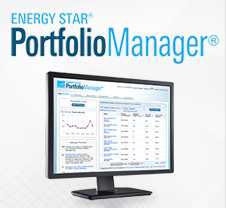By David Borchardt, P.E. and Jared Lyles, C.E.M., mechanical engineers with MD Energy Advisors (presented at NFMT Remix) — We have all received an energy bill and wondered why is it so high, what changed? We rack our brain and try to remember was it hot or cold last month, if the price of energy jumped, or if something else may have caused the increase. Enter benchmarking — an opportunity to take the mystery out of energy bill expenses.
So, just what is benchmarking? The Department of Energy defines it as “a mechanism to measure energy performance of a single building over time, relative to other similar buildings.” It takes into consideration the location and type or use of the building, number of occupants, size, operating hours, and the weather conditions, and compares your building to similar buildings. It allows you to know if your building’s performance changed and if other factors were involved. While none of this lowers your bill, it’s what you do with the information that could help you control your costs. You can’t improve what you don’t measure.
In this feature from MD Energy Advisors, a Baltimore-based commercial, utility, and financing energy solutions company, we share low and no cost solutions, minimal cost solutions, and capital cost solutions. We will review each strategy and provide examples as well as links to free tools and tips.
Low and no cost
Regardless of your building type or age you will have an annual operating budget for the normal wear and tear and equipment replacement. Here are a few low and no cost activations we recommend:
- Lighting — Replace fluorescent or incandescent lighting with LEDs (in most cases you can do this without changing the fixture), and see if rebates are available.
- Faucet aerators — Replace the aerators. It only costs pennies and saves water and energy since you will be heating less water. Be sure the building temperature set points are appropriate and have not been adjusted too high or low.
- Lease requirements — Review requirements and request language updates that will reduce your energy use after a new tenant buildout or renovation.
Minimal cost solutions
Use your maintenance budget line item wisely. Just a few ideas:
- Instead of replacing broken or worn-out equipment, like a thermostat or control with a device that has been sitting on the shelf gathering dust for years, find something new that will help you save energy, like a programmable thermostat or control that considers CO₂ levels or can eventually be controlled via a building automation system.
- If a motor needs replacement, find a more efficient motor and see if a rebate is available.
- Add a time clock to a hot water circulating pump so you are only pumping when the building is occupied and not circulating water at night and over the weekend.
- Check the local utility rebate program and consider an energy audit.
Capital cost solutions
Every building reaches a point where a major piece of equipment breaks or is no longer economical to repair. Getting the least expensive piece of equipment without considering the cost of running that equipment is usually the most expensive choice. Choosing a new air-conditioning system that has better controls and is more efficient to operate will likely not just save you money on operation but on the longevity of the equipment. This is also a case where rebates might be available to support a reduction in costs; recent federal legislation might provide tax incentives for energy efficient upgrades. This strategy applies to HVAC and other ancillary equipment including but not limited to refrigeration, elevator motors, pumps and water heating.
Start benchmarking
Regardless of what strategies you chose, your first step is to benchmark your facility so you have a starting point and can demonstrate improvement over time, with results that are consistent and verifiable. Benchmarking using ENERGY STAR Portfolio Manager will also have you prepared if your jurisdiction or state enacts a Building Energy Performance standard, or a tenant or investors need to document carbon footprint information. Below are some helpful resources.
Resources
Benchmarking: Benchmark Your Building Using ENERGY STAR Portfolio Manager.
Resources and ideas for improving building efficiency: Better Buildings is an initiative of the U.S. Department of Energy (DOE). Through Better Buildings, DOE partners with leaders in the public and private sectors to make the nation’s homes, commercial buildings, and industrial
plants more energy-efficient and sharing successful best practices. Find solutions shared by Better Buildings partners.
Rebates and incentives: Start with your local utilities and speak to your tax advisors. DSIRE — the Database of State Incentives for Renewables & Efficiency — is the most comprehensive source of information on incentives and policies that support renewables and energy efficiency at the federal, state, local and utility levels.





